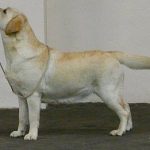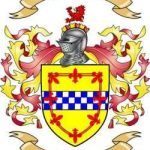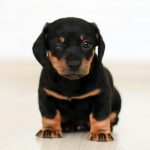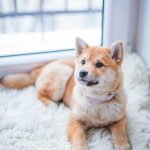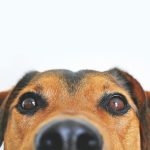
PUDEL, English version
ORIGIN: France.
PUBLICATION DATE OF THE CURRENT PATTERN:06.03.07.
CLASSIFICATION: Companion Dogs.
CLASSIFICATION F.C.I. Group 9 Decorative and Companion Dogs.
Section 2 Poodles.
Not subject to work trials.
OUTLINE OF THE HISTORY OF THE BREED:
Etymologically, a French word “caniche” comes from “cane”, French term for female duck. In other countries, the breed name is associated with wading, splashing in water. Originally this dog was used to hunt wild waterfowl. The breed is derived from barbet’A, of which many features have been preserved until now. In 1743 the name “Poodle” appeared in French “la caniche”, defining the bitch of the barbet breed. Later in term „barbet” i „caniche” /poodle gradually acquired a separate meaning. Breeders put a lot of hard work into getting dogs with original type and uniform colouring. The Poodle has become a very popular companion dog because of its friendly, playful and loyal character, but also because of its four size varieties and different coatings that everyone can choose according to his/her taste.
OVERALL EXPRESSION: Medium build dog, with characteristic curly coat – curly or stringy. He has the appearance of an intelligent dog, always alert and active, harmoniously built, making an elegant and proud impression.
ESSENTIAL PROPORTIONS :
• Length of muzzle is approx. 9/10 of the length of the skull.
• The length of the body/ measured between the shoulder and the ischium is slightly longer than the height at the withers.
• Height at the withers is almost equal to the height of the croup.
• The distance from the ground to the elbow is 5/9 of the height at the withers.
PERSONALITY/TEMPERAMENT : This dog is known for its loyalty and ease of learning and being put down, making it an especially nice companion dog.
HEAD: Expressive, with straight contours, proportionate to body. The head must be well shaped and not heavy, massive or too fine.
SKULL REGION:
Skull: Its width is less than half of the length of the head.
The skull, seen from above, is oval in long axis and slightly convex in profile. Longitudinal axes slightly divergent.
Eyebrow arches: Moderately pronounced, covered with long hair.
Frontal furrow: Wide between the eyes, tapering toward a strongly defined occipital cusp (may be slightly less pronounced in miniature poodles).
TOE: Not very pronounced.
CRANIOFACIAL AREA:
NOSE: Well developed, vertical profile; broad nostrils. Black in black, white and silver poodles; brown in brown poodles; in orange-fawn (apricot) and red-fawn poodles – brown or black.
Muzzle : The ridge of the nose is perfectly straight. Length is approx. 9/10 length of skull. Shoulders of lower jaw run almost parallel. Muzzle firm. The lower outline of the muzzle is defined by the mandible, not by the line of the lower lip.
Lips: Moderately developed, fairly close fitting, medium thickness; upper lip rests on lower lip, not hanging below.
Black in black, white and silver poodles; brown in brown poodles. On orange-fawn (apricot) and red-fawn poodles, dark brown to black. The corners of the lips should not be too pronounced.
Maxilla and mandible and teeth: Scissor bite. Strong teeth.
Cheeks: Not protruding, shaped on bones. Suborbital arches modelled and moderately prominent. Arches of zygomatic jaws very little prominent.
Eyes: Showing keen interest; set at stop height and slightly slanting. Almond shaped. Black or dark brown. In brown poodles can be dark amber in color.
Eyelids: Eyelid borders black in black, white and silver poodles; may be brown or black in orange-fawn (apricot) and red-fawn poodles.
Ears: Quite long, falling along the cheeks; set in the prolongation of a line commencing at the tip of the nose and passing below the outer corner of the eye; flat, widening below the root and rounded at the tips; covered with long wavy coat. Ears should reach to the corners of the lips.
NECK: Strong, slightly arched below the nape; of medium length; harmonious. The head carried high and proud. No bosom; oval in cross-section. Neck length slightly less than the length of the head.
BACK: Proportionate. Length exceeds slightly height at withers.
Withers: Moderately developed.
Back Short. Back line harmonious and compact. Height at withers is equal to the height from top of rump to ground.
Loins: Strong and muscular.
Croup: Rounded but not sloping.
Breast: The forechest must protrude slightly and be placed quite high.
Chest: Reaches down to the elbow; width corresponds to 2/3 of its depth. In large poodles the circumference of the chest, measured behind the shoulder blades, must exceed the height at the withers by at least 10 cm. Chest oval in cross section, wide at the back.
Abdomen and weaknesses: undercutting marked, but not too much.
TOGGLE: Set quite high, at the level of loins. Can be of natural length or shortened by 1/3 or ½ length, in countries where cutting the tails is not prohibited. The tail should be carried low at rest; in movement – Carried diagonally.
LIMBS
Forelegs: Perfectly straight and parallel; well muscled, with strong bone. Height, measured from elbow to ground, is slightly more than half the height at the withers.
Shoulders: Well angulated and muscular. The shoulder makes an angle of 110 with the humerus°.
Arm: The length of the humerus corresponds to the length of the shoulder blade.
Carpal joint: Forms an extension of the forearm line.
Midriff: Strong and – seen from the side – almost straight.
Front feet: Rather small, compact, short oval shape.
Toes well arched and compact. Pads hard and thick. Claws – black in black and silver poodles; black or brown in brown poodles. In white poodles, claws in a whole range of colors – from horned to black. In orange-fawn (apricot) and black poodles – Brown or black.
BACK END : Seen from behind – parallel ; muscles well developed and clearly visible. The hock is fairly well angulated. The angles : hip-femoral, tibio-femoral and tibio-humeral, should be well defined.
Thigh: Well muscled and strong.
Metatarsal: Rather short and straight. Poodle should be born without vestigial toes on hind legs.
Back paws: Same as front paws.
Gait/Movement: Poodle moves with light and springy movements.
SKIN: Elastic, not loose, pigmented. Black, brown, silver, orange-fawn (apricot) and red-fawn Poodles must be pigmented according to coat color. In white poodles a silver color of the skin is desirable.
SHAPE
HAIR:
Curl : Ample, with fine, woolly structure, very curly, flexible and resistant to hand pressure. It should be thick, dense, of equal length; it should also form even curls. Rope: Abundant, with fine, woolly structure; dense, forming characteristic cords, which should reach a length of at least 20 cm.
COLOUR: Uniformly black, white, brown, silver, apricot (orange-fawn) and red (red-fawn). Brown: Should be deep, rather dark, uniform and warm. The shade beige and its lighter derivatives are not allowed. Silver: It must be uniform, deep; it cannot go into black or white. Apricot (orange-fawn): Must be uniform; not close to a light fawn, cream or red-fawn color. Red (red-fawn): Must be uniform throughout the body. Absolutely must not be close to orange-fawn (apricot).
Eyelid rims, nose, lips, gums, palate, natural openings, scrotum and pads – well pigmented.
DIMENSIONS:
Large Poodles: Over 45 cm to 60 cm, with a tolerance of 2 cm over.
The large poodle must be an enlarged and developed copy of the medium poodle, maintaining its characteristics.
Medium Poodles: From 35 cm to 45 cm.
Miniature Poodles: From 28 cm to 35 cm. The miniature poodle must resemble a reduced medium poodle, keeping – as far as possible – same proportions. Shall not show any diminishing mark.
Toy Poodles: Over 24 cm to 28 cm (desirable ideal: 25 cm), with a tolerance of -1 cm. The Toy Poodle resembles the Miniature Poodle and follows the same general proportions, satisfying all the requirements of the standard. Any sign of dwarfing is unacceptable; only the occipital bump may be less marked.
FAULTS: Any departure from the foregoing qualities should be considered a fault and the assessment should be in proportion to its degree and extent.
• Carpi dorsi or arched back.
• Tail set too low.
• Excessive excitability.
• Teeth: Absence of 2 P1 is not considered, Absence of one P2 or symmetrical absence of two P2.
• Missing M3 not taken into account
HEAVY FAULTS:
• Partial depigmentation of nose.
• Bark nose.
• Pointed muzzle.
• Convex ridge of the nose.
• Teeth: Asymmetrical missing two PM2.
• Eyes too large or sunken, not dark enough
• Ears that are too short.
• Rump drooping.
• Tail folded over back.
• Too steeply angulated hind legs.
• Walking with step or long stride.
• Rare, soft or hard coat.
• Undecided or patchy coat: silver tinged or white silver; faded apricot orange, cream, beige or too dark brown in brown poodles.
ELIMINATION DEFECTS:
• Aggression or excessive timidity.
• Complete depigmentation of nose.
• No type, especially of the head.
• Back-toggle or fore-toggle.
• Teeth: Missing 1 incisor, 1 canine or 1 breaker tooth (upper P4, lower M1). One P3 or P4 missing. Absence of three or more P’s (except P1).
• The tail is missing or naturally short.
• Toes or vestigial toes on hind legs.
• Coat of uneven color.
• White patches.
• White fur on paws.
• Height above 62 cm in large poodles and below 23 cm in toy poodles.
• All signs of dwarfism: round skull, lack of occipital bone, too pronounced stop, bulging eyes, too short and sloping muzzle, receding mandible.
• Median groove almost invisible.
• Very light bone in toy poodles.
• Tail angled, with the tip drooping over the flank or croup.
Any dog showing physical or mental abnormalities shall be disqualified.
Note: Male animals should have two normally formed testicles fully descended into the scrotum.
Appendix to the Standard
RECOGNISED SHOW HAIRSTYLES
Hairstyle „On a lion” /”lion’s head”/: Poodles, both with curly and corded coat, should have their hind legs shorn down to the ribs. Also clipped: muzzle – from the lower eyelid upwards and downwards; cheeks; forelegs and hind legs, except for cuffs or bracelets and permitted extra patches of hair on hind legs; tail, leaving a round or elongated pompon. Moustache required on all individuals. It is permissible to leave a hair called „ports”, on the forelegs.
Haircut „modern”: Leaving hair on the four limbs is allowed only if the following rules are observed:
1. Should be shorn:
(a) Down the forelegs – from the claws to the height of the vestigial toe /first toe/; down the hind limbs – Up to the same height. Shaving, limited to toes, is acceptable
(b) head and tail, according to the rules described above. It may exceptionally be allowed with this hairstyle:
– leaving under the jaw a short hair, not longer than 1 cm, the ends of which should be cut parallel to the mandible.
So-called. „Goatee” is not allowed.
– shortening the pompon on the tail.
2. The hair on the body should be shortened, for effect „shiny silk”, Not more than 1 cm long. The length of the coat increases gradually around the ribs and in the upper part of the limbs.
3. Should be sorted out:
(a) head hair – The hair shall be of a moderate height so that it forms a helmet of moderate height as well as below along the neck to the withers and on the front – evenly, without interruption, down to the shorn part of the paws, along a slightly diagonal line from the top of the sternum downwards. The coat on the upper part of the ears and up to 1/3 of their length, can be trimmed with scissors or shaved with a razor towards „with hair”. On the lower part of the ear the hair should be left, which grows gradually from top to bottom, ending with a fringe that can be leveled.
(b) leg hair – „portki” or „pantaloons”, shall stand out clearly from the smoothly shorn paws. The length of the hair gradually increases upwards –reaching the length of 4-7 cm on shoulder blades and thighs /measured with erect hair/ – In proportion to the size of the dog but avoid giving the impression of being buff. „Pantaloons” On the hind legs shall not interfere with the usual angulation of the poodle.
Any other fancy haircut not conforming to the above standard shall be eliminated. Whichever of the model hairstyles is used, it shall not affect the assessment at the show – This means that all dogs of the same class in any of the standard haircuts are judged equally.
Haircut „English”: Apart from „lion” motifs on the hind limbs, cuffs and bracelets are left in addition. A helmet /fringe/ is left on the head. In the case of this type of shearing, the mustache is an arbitrary element. It is permissible not to have a clear cut on the hind legs. Helmet /fringe/ is not an element of any (it is forbidden to use hair spray and all similar substances to maintain a stable hairstyle).
Poodles that have not been shorn according to the standard, will not (until they are in the wrong hairstyle) be judged or awarded during exhibitions and official shows, however, this does not eliminate them from breeding.

